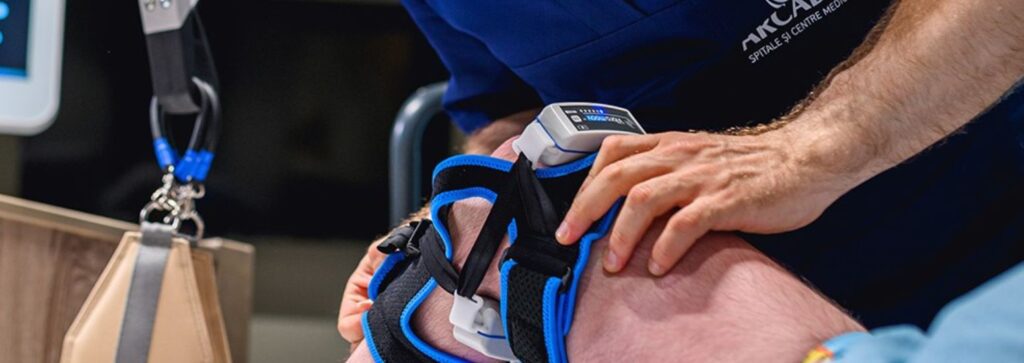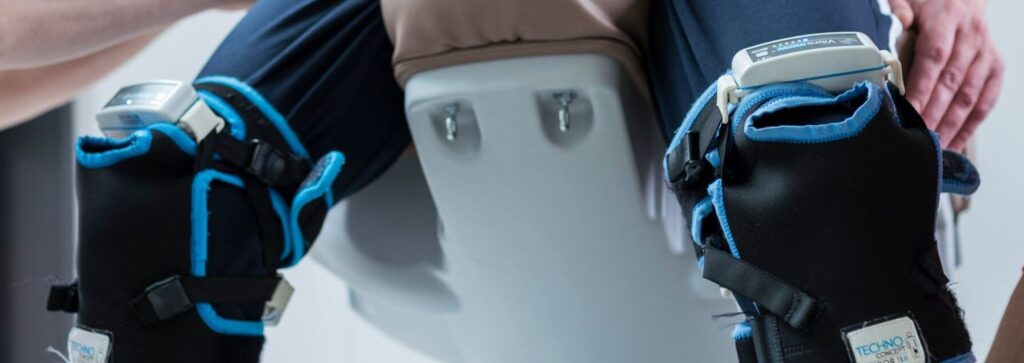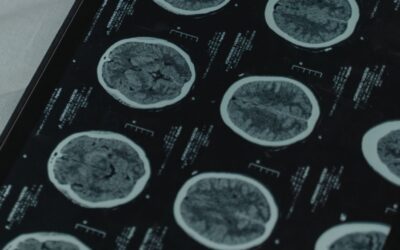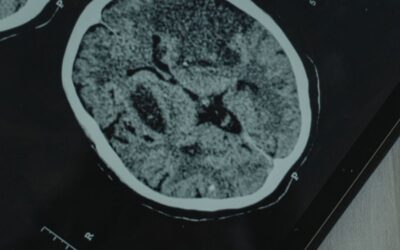Early Stimulation of the sensory system… Vibramoov technologies offer to Neurorehabilitation healthcare professionals a unique opportunity to preserve & enhance sensory-motor functions of patients suffering from motor …
Mode 1 – Functional Proprioceptive Stimulations [FPS]
FPS induces a sensation of movement in the direction that would have lengthened the stimulated muscle. These induce sensations of vibramoov movement and can provoke motor responses corresponding to the movements felt by the patient. FPS (Functional Proprioceptive Stimulation) facilitates movement, keeps sensorimotor interactions alive, and stimulates neuroplasticity.
Lower limb-
- Bedridden ICU: Very early stimulations without transfer
- Verticalised: Patients who can be verticalised
- Walk with a treadmill: Patients who can stand with assistance
- Gait with parallel bars: Patients able to stand & initiate small steps
- Overground gait: Patients in need to increase their gait quality

Upper limb-
- Seated with arm support: Patients with limitations to raise their arm
- Seated without arm support: Patients who can raise their arm
- Standing with arm support: Patients who can raise their arms and stand
Mode 2 – Regulation of muscle tone
Focal vibrations are applied to the middle of the muscle. The aim is to preserve muscle structure & promote the regulation of the muscle activity between agonist & antagonist. Possible synchronous treatments of patients with similar conditions allow a larger number of daily applications.
- Agonist stimulations: Prevention of muscular hyperactivity
- Alternated stimulations: Moderate muscular hyperactivity
- Antagonist stimulations: High muscular hyperactivity
Clinical applications: As early & frequently as possible once medical stability is reached…
Neurological impairments: Stroke, spinal cord injury, traumatic brain injury, Parkinson’s disease, hemineglect… > Polytrauma/Orthopaedics >Consequences of ageing (ankylosis, balance deficit, muscular weakness…)
Importance of early Neurorehabilitation
- Intensive Care:
Mobilisation in ICU is problematic:
- Ventilatory support
- Hemodynamically unstable
- Unstable Fractures
Preventing Complication-
Limited exposure to PT
- Early Rehabilitation:
Role of early rehabilitation with Vibramoov
- Repetition of tasks
- High intensity
- Increasing challenge

Start as early as possible for–
A better outcome
Re-initiate the movement:
Progressive and intense work based on the repetition of adapted motor tasks → Enhances sensory stimulation → Motivates and challenges the patient.
Recovery:
Early and goal-oriented mobilisation help to:
- Encouraging patient mobilisation throughout the admission
- Shorten the length of stay in the intensive care unit
- Improving the functional mobility of patients in the hospital
The comments and impressions of the patients are unanimous! All experience a very pleasant feeling of relaxation, of fluidity in the movements. This creates immediate relief and improved proprioception.
Connect with the Vibramoov interface at www.rehabmodalities.com to re-initiate virtual movements, helping patients gain physical confidence!
To know more write to us: info@rehabmodalities.com



